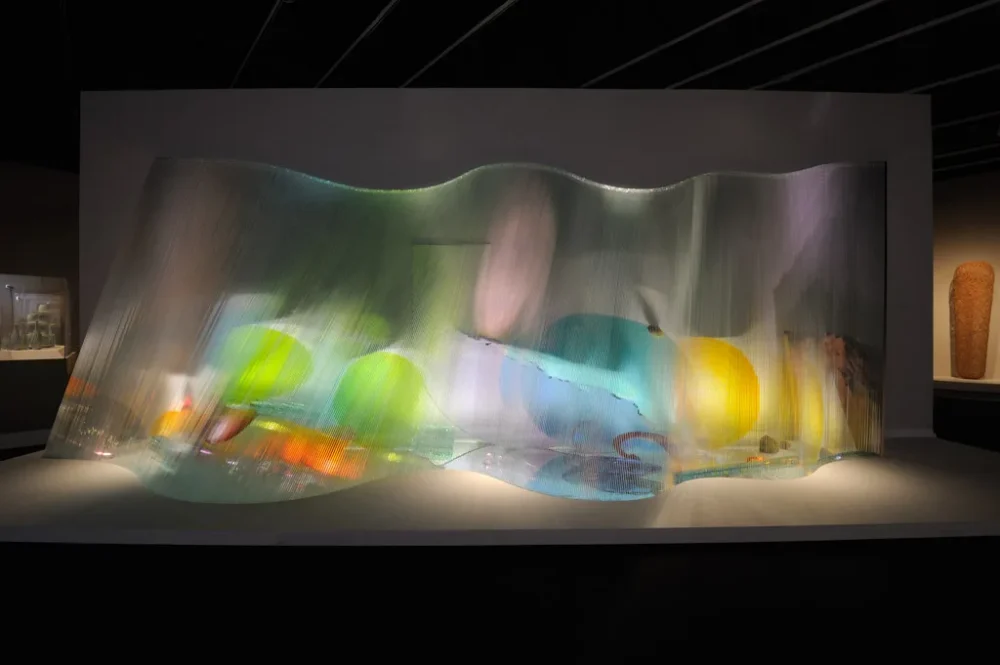MyLoan Dinh’s sculptures and collages embody her life experiences. In 1975, she and her mother, father, and brother escaped Vietnam by boat as Saigon fell. Dinh recounts, “For 6 days, we were forbidden to dock because the ships belonged to the now-defunct South Vietnamese government. We were stateless.” Finally, officers on the USS Kirk “followed their moral compass” and allowed them to join their fleet. Thirty former South Vietnamese Navy ships and dozens of cargo and fishing boats “lowered the Vietnamese flag and were given the American one.” With that simple gesture, her homeland was erased and a new one replaced it.
This fragility of homeland, identity, and perceptions around nationality constitute the core of Dinh’s themes. She explores them, along with the systemic racism embedded in countries formed by colonial practices, in poignant works that merge contemporary art traditions and traditional craft methods. Combining utilitarian objects that connote durability—tools, envelopes, life jackets, a passport—with eggshells, embroidery, and fabric, Dinh grapples with the fragility of responsibility, the messiness of hope, and the resilience of committing to personal convictions to find stable ground from which to connect with others.
From there, Dinh proposes, “Despite our differences, together we can negotiate a common goal for a common good.”

